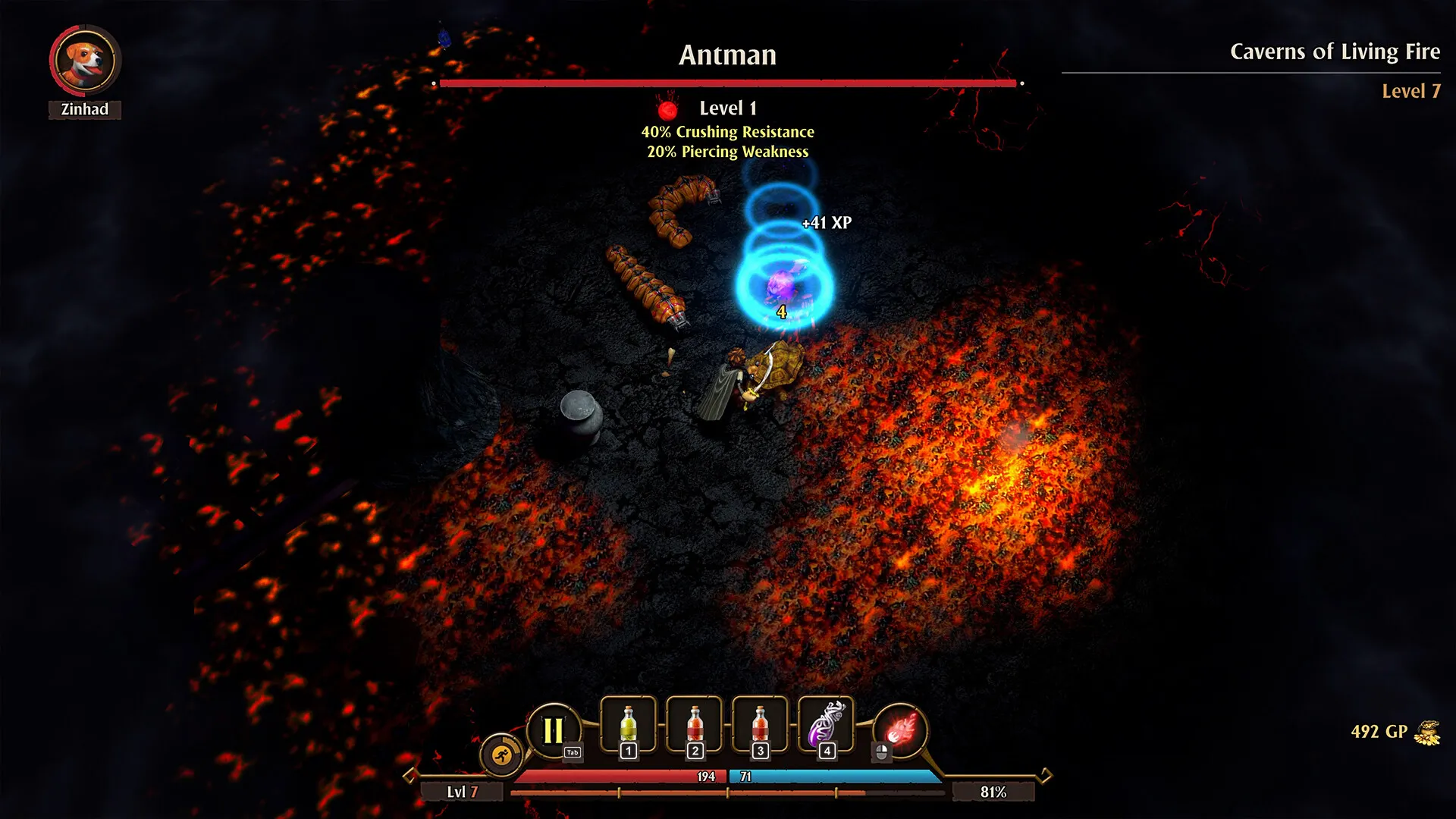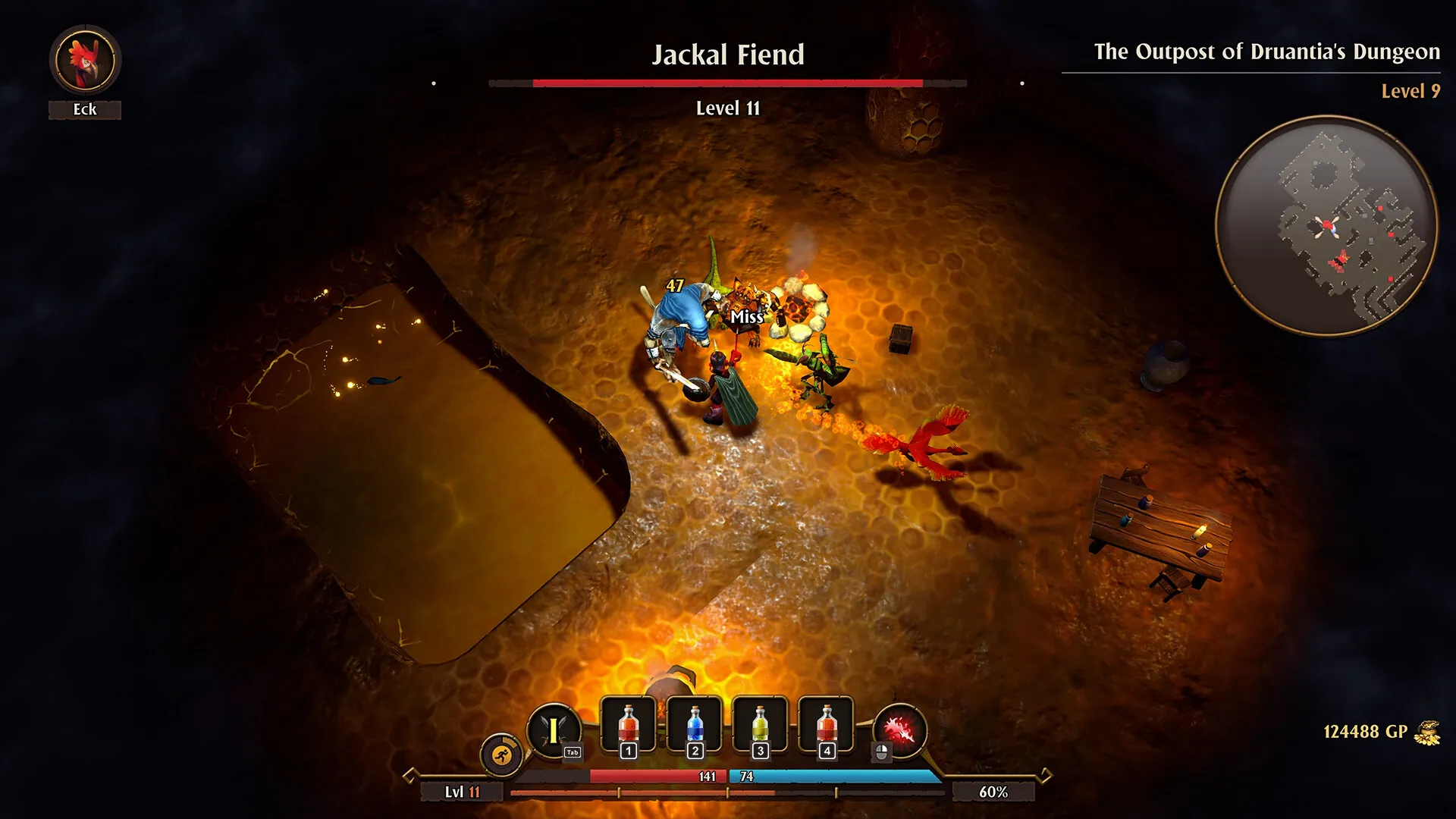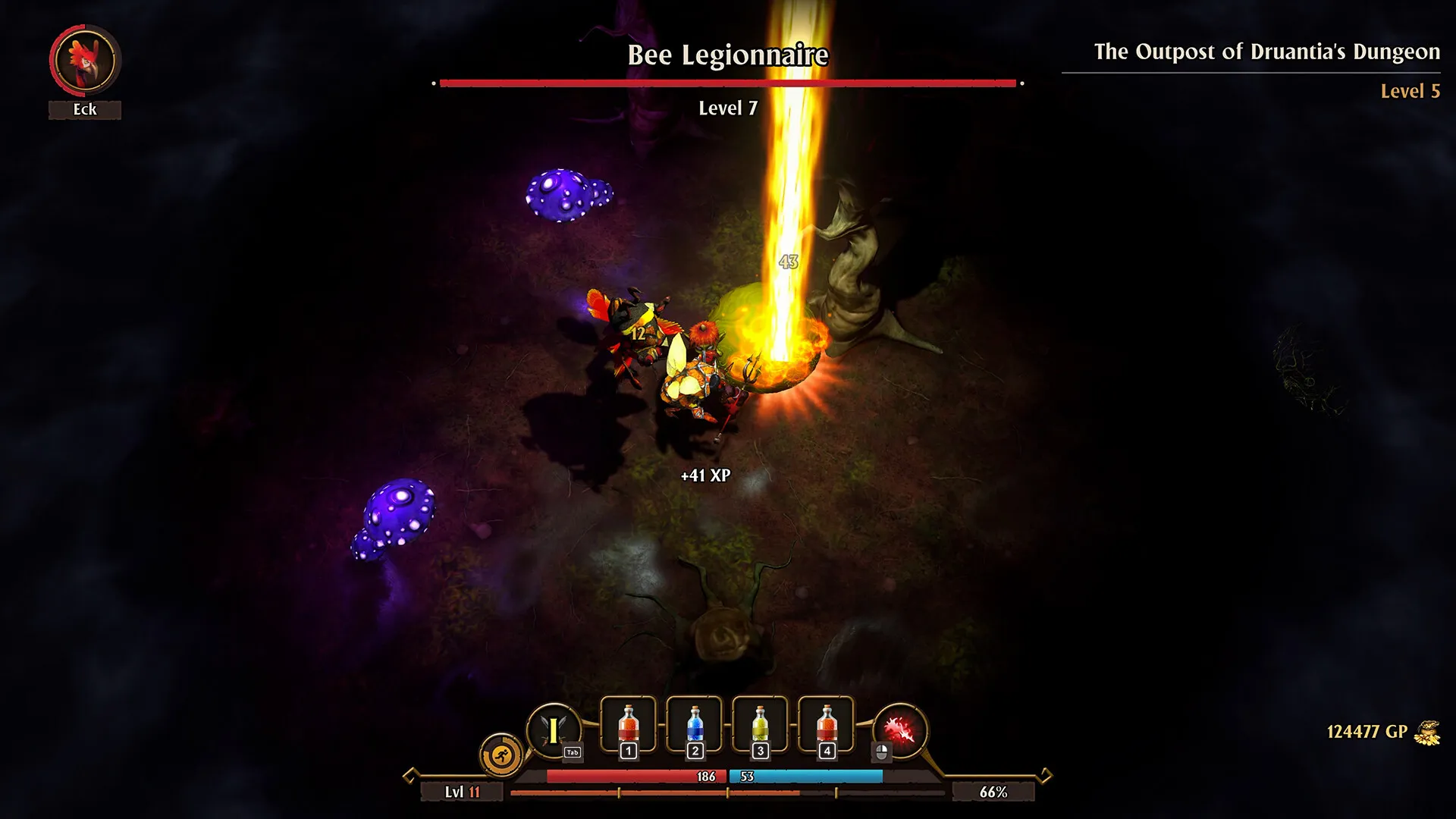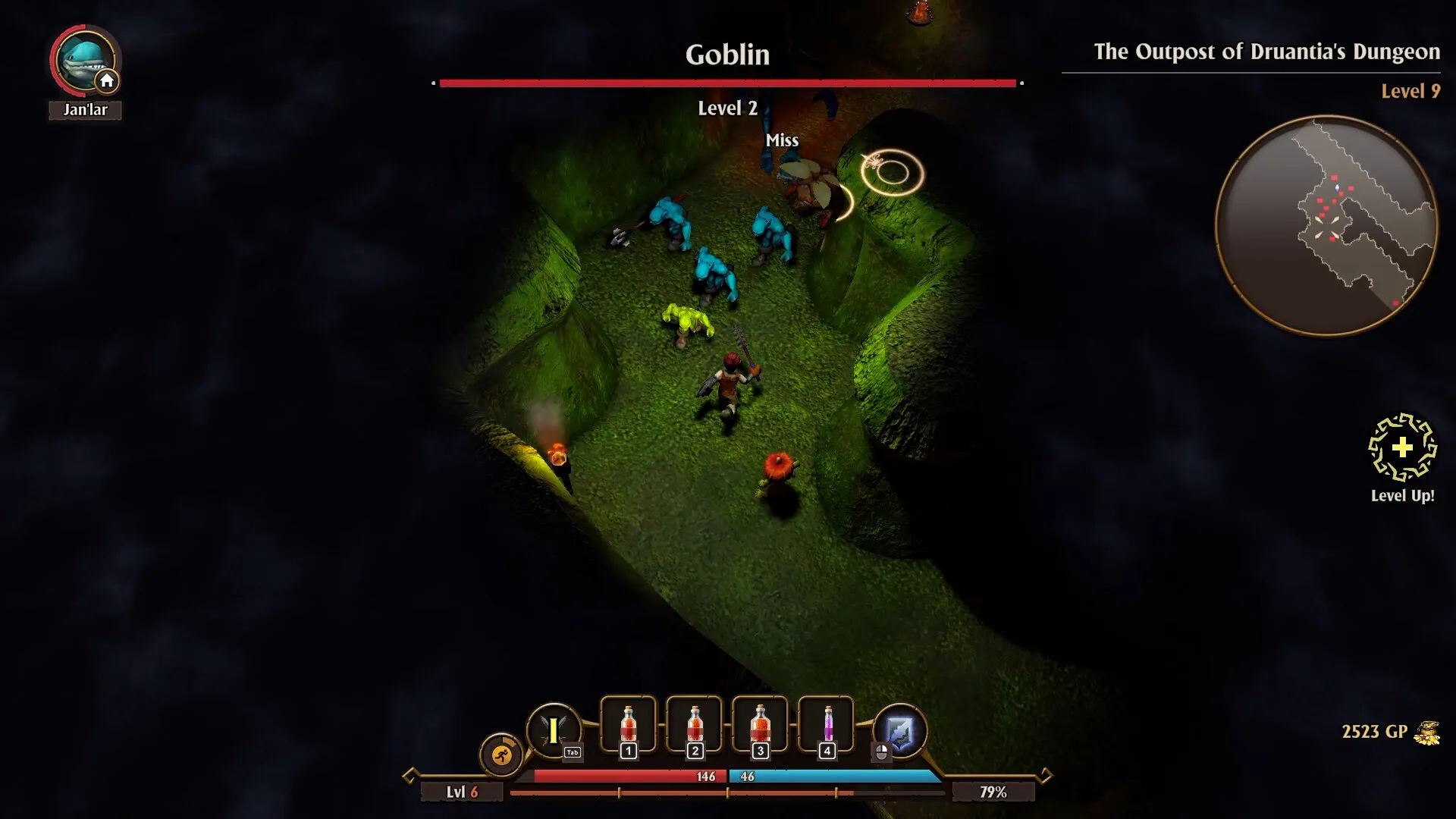When the first FATE emerged in 2005 from WildTangent, it arrived as a Western answer to procedural dungeon diversions popularized by Diablo. Three follow‑ups—Undiscovered Realms (2008), The Traitor Soul (2009) and The Cursed King (2011)—deepened its loot‑first ethos, yet never strayed far from Grove’s humble gate. Tableflip’s Reawakened brings these four titles into a single high‑definition anthology tailored for PlayStation 5, Steam and beyond, preserving the series’ DNA while offering modern visual flourishes.
At its heart, FATE invites players to fashion a hero—be it human, dark elf or mechanized Cogger—and step through Grove’s portal into infinite, algorithmic labyrinths. Every descent promises new stat‑rolled weapons, spell scrolls and pet companions ready to simplify—or complicate—the journey. This hub‑to‑dungeon rhythm underpins the series’ storytelling economy, where narrative fragments appear as side‑quest whispers rather than epic arcs.
Reawakened amplifies that simplicity with real‑time lighting, higher‑poly character models and ambient occlusion that accentuate torchlight flicker in crypt corridors. Voiceovers have been localized in multiple tongues, reflecting an intent to speak directly to both Western nostalgia and emerging RPG audiences in Asia and Latin America.
Fans who long for the original flow will find their favorite gear clatters satisfyingly again, while newcomers may appreciate quality‑of‑life tweaks, such as customizable controller mapping and clearer inventory menus. At a modest price, this collection asks whether an early‑aughts relic can still resonate in today’s global role‑playing landscape—and what it reveals about the staying power of procedural storytelling…
Presentation: Graphics, Audio & UI
Reawakened’s leap to high‑definition mirrors the way global remasters of classic films—think Kurosawa’s restored Akira Kurosawa’s Seven Samurai—bring new life to familiar frames. Here, polygon counts have surged, and real‑time directional lighting bathes each corridor in dynamic shadow, recalling chiaroscuro techniques from European art cinema.
Ambient occlusion lends crevices a tangible depth, so that torchlight spills and fades with a naturalism rare in dungeon crawlers. Yet because all four titles share the same upgrade pipeline, there’s a uniform sheen that occasionally flattens the sense of progression from one entry to the next—much like a single filter applied across a multi‑episode series, where each installment loses some individual grain. Character and pet models gain crisp animations—ears twitch, feathers ruffle—but a few stray vertices still betray missing geometry near water edges.
Grove’s town square feels like a European village painted by a manga artist: cobblestone paths and Tudor‑style half‑timbers meet stylized foliage that might have stepped out of a Studio Ghibli forest. Dungeon tile‑sets shift from mossy crypts to crystalline caverns, each theme stitched together by the same texturing palette.
Elemental spells—iced shards, swirling embers—cast vibrant silhouettes that shift ambient light; at their best, they evoke the dramatic fluidity of Hong Kong wuxia cinema’s flying punches. Yet occasional mismatches—floating walls, black‑void gaps—jerk players from immersion as jarringly as a soundstage visible through a painted backdrop.
The soundtrack’s minimalist flute and lute melody in Grove nods to medieval European folk, while dungeon loops lean on steady percussion reminiscent of Japanese taiko rhythms; over time, repetition sets in, inviting comparisons to looping scores in indie horror titles. Sound effects—weapon clangs, monster bellows—are weighty but sometimes clip or spike, especially the portal return roar that drowns out dialogue. Fully dubbed voice tracks in five languages signal an ambition to reach Latin American, East Asian and Western audiences alike, though tonal consistency varies between actors.
Menus balance clarity with tradition: inventory grids and skill trees unfold like classical RPG blueprints, yet radial menus for spells feel borrowed from modern action titles. Quick‑access mapping via D‑Pad or keyboard shortcuts improves pace, though missing buff‑duration bars and sparse stat tooltips occasionally force players back into nested screens. In a project that bridges two decades of design, these choices reveal both harmony and tension between old‑school structure and global expectations of seamless interactivity.
Global Dungeons, Local Stories: Gameplay & Combat Dynamics
FATE’s procedural dungeons channel both Western ARPG traditions and echoes of Japanese roguelike design, where each descent unfolds unseen corridors and recycled tiles with minor shifts. Randomness fuels a sense of discovery that mirrors how international cinema sometimes revisits familiar backdrops with new characters.
Main quests drop breadcrumbs of narrative—rescue missions or artifact hunts—while side objectives often feel like cultural footnotes, nodding to local folklore in item names or creature designs. The constant loop between Grove’s friendly square and its shadowed depths recalls how films like Rashomon return to a central town before spinning into new perspectives.
Melee combat alternates between satisfying weight—steel weapons cleaving through skeletons—and awkward “lock‑in” animations that overshoot their reach. This duality feels like watching a choreographed samurai duel slowed down for emphasis, then sped up for spectacle. Ranged attacks and elemental spells channel blockbuster VFX moments: a fireball’s glow paints dungeon walls like a South Korean fantasy epic. Yet the need to equip one spell at a time via radial menus undercuts that power fantasy, creating a tension between cinematic flow and menu‑driven pauses.
Pets blend cultural tropes: the fox recalls East Asian kitsune myths, while mechanical drones echo Western sci‑fi sidekicks. Their tendency to “steal” kills can amuse like a clever supporting actor or frustrate like an errant camera cut. Customization options for companions reflect regional attitudes toward loyalty and autonomy, offering choices that feel both universal and culturally stamped.
Controls sit at a crossroads: console thumbsticks guide the camera around dark vaults, whereas PC mouse users may find precision tempered by rigid lock‑ons. Stamina meters, introduced as a nod to modern resource management, throttle sprinting in a way that feels borrowed from survival horror rather than classic dungeon crawlers.
Enemy scaling and loot drops further highlight cultural balancing acts. Hardcore modes test skill in a manner familiar to European challenge‑driven design, while the magic‑find stat hearkens back to North American loot obsession. Exploits—like retirement gem‑stacking—emerge when mechanics collide with player ambition, revealing how global audiences adapt systems in unexpected ways…
Custom Heroes Across Cultures: Growth, Gear, and Companions
When you first step into Grove, the act of choosing race feels like selecting a role in a transnational epic. Humans play as balanced protagonists in the mold of Western fantasy novels, while Shadow Elves evoke European folklore of nocturnal grace. Half‑Orcs channel the raw physicality found in African and Norse sagas, and Coggers recall industrial steampunk visions rooted in 19th‑century Europe.
Imps, with their impish smiles, echo trickster figures from both Western fables and Japanese yokai tales. Cosmetic sliders for body shape, hairstyle and facial features borrow from modern character creation in global RPGs, and the option to randomize aligns with Eastern gacha‑style surprise.
As experience points accumulate, players face the familiar choice: funnel every point into magic for dazzling spells, or bulk up strength to cleave through foes. Dexterity enhances nimble tactics—dodging echoes of kung fu‑inspired combat in Hong Kong cinema—while vitality secures a buffer against relentless monster waves, calling to mind survival dramas. Secondary stats like critical chance and magic defense shape how narrative moments land: a high crit can turn a scripted boss encounter into a triumphant set piece, just as a miscast spell may force a retreat.
Spell learning mimics rites of initiation in global mythologies. Each scroll acquired carries a brief lore snippet, and equipping a single spell at a time via radial menu can interrupt the action‑movie momentum, pressing players to plan rather than react. This tension recalls arthouse thrillers that cut between plotted dialogue and sudden bursts of visual spectacle.
Loot drops follow randomized tables reminiscent of Diablo’s temple of riches, yet when gems socket in during retirement, players discover exploit paths that echo how fans worldwide reverse‑engineer beloved films to reveal hidden edits. Artifacts meant to remain rare sometimes gain repeated enchantments, highlighting the risks inherent in modernizing classic systems.
Companions—from faithful terriers to fiery phoenixes and slick hovering drones—reflect local storytelling traditions. A fox pet nods to kitsune legends, while mechanical drones invoke global anxieties about automation. Each creature’s combat role and inventory management duty reinforces cultural attitudes toward loyalty and utility.
Even fishing feels culturally coded: the mini‑game’s serene rhythm channels the quiet patience of Japanese RPG side quests, yet errant land‑locked spots and clustered nodes expose technical oversights that disrupt the meditative pause. As these systems intersect—character, skill, loot and pet—the game poses a question of how remastered mechanics can honor diverse storytelling legacies while keeping every player immersed…
Global Polishing: Performance and Player Comfort
FATE: Reawakened’s technical backbone reveals a tension between heritage code and modern audience expectations. On PlayStation 5, frame rates generally hover near a stable 60 fps, mirroring Japanese action titles that prize smooth animation, while PC builds allow graphical tweaks at the expense of occasional dips when entering dense dungeon chambers. Load times from Grove back to the deepest floor feel brisk on SSD hardware, echoing the snappy transitions of Nordic RPGs, though older drives can introduce pauses that fracture player focus.
Yet this remaster carries vestiges of its original architecture. Equipping a sword or armor often shows correct bonus values in menus, only for those stats to vanish on recheck—an inconsistency that mirrors lost frames in restored cinema prints. Retirement exploits, where jewels socketed into gear persist beyond intended limits, invite players to engineer overpowered builds.
Such loopholes echo how international fans dissect beloved films frame by frame, uncovering hidden cuts and alternate takes. Monster AI swings between alert pursuit and inexplicable idling; watching foes retreat down corridors can feel as disorienting as a character suddenly vanishing in a splice‑heavy art film. Visual oddities—like weapons held backward—or deafening portal sound cues break immersion much like an abrupt jump cut.
Newcomers arrive in Grove without guidance. The absence of onboarding parallels avant‑garde storytelling in European arthouse cinema, where viewers must piece context from ambient clues. Button mappings can be rebound, but dragging items into slots remains impossible, a holdover from decade‑old menus. Buff timers hide behind submenus, and stat descriptions assume prior knowledge—this opacity challenges players who expect immediate feedback, as they might in streamlined Korean mobile RPGs.
Simple conveniences—direct hot‑bar assignment for potions, automatic inventory sorting, bulk selling—are missing, suggesting a respect for the original’s pace more than a concession to global design standards. Trophy lists and achievements exist, yet online features remain minimal, leaving cooperative or social elements largely unexplored. As technical layers both support and obstruct the core experience, one wonders how much a remaster should honor its past versus fully embrace today’s expectations…
Infinite Depths: Volume and Replayability Across Borders
FATE: Reawakened bundles four distinct adventures—2005’s original FATE, Undiscovered Realms (2008), The Traitor Soul (2009) and The Cursed King (2011)—into a single tapestry that feels both comprehensive and episodic. Each chapter unfolds unique environments and narrative beats: the moss‑draped caverns of Grove give way to icy ruins in Undiscovered Realms, while Traitor Soul’s rage‑attack system and Cursed King’s haunting storyline stand apart yet share that signature loot‑driven engine. Like consuming a foreign film anthology with recurring themes, players experience familiar mechanics reframed by fresh settings.
Main quests deliver core motives—rescue villagers, recover relics—while side missions lean heavily on local color, such as fishing in hidden grottos or aiding eccentric townsfolk whose dialogue hints at regional myths. Endless dungeons spin out randomized corridors long after narrative threads fade, echoing how gaming communities in Asia and Latin America prize procedural systems for their unpredictability.
The chase for rarified gear and artifact hunts mirrors collectible‑culture practices seen in Japanese mobile titles, where “magic‑find” builds become an obsession. Trophy lists—ranging from feeding pets exotic fish to looting every gem type—cater to completionists who relish structured challenges, much as Western players pursue achievement milestones.
Character imports and new‑game+ options encourage multiple playthroughs, while PC modders in European and Russian forums have started patching stat exploits and crafting balance overhauls. In combining four eras of dungeon crawling, Reawakened asks whether quantity alone can sustain curiosity when every descent feels both familiar and novel…
Final Appraisal & Recommendation
FATE: Reawakened delivers the nostalgic thrill of randomized loot, polished high‑definition visuals and a depth of character customization that longtime fans will appreciate. Its procedural dungeons and pet companions retain the series’ signature charm, even as melee combat feels stiff and spell swapping interrupts the flow.
Technical hiccups—lost stat bonuses and occasional graphical glitches—remind players of its legacy code, while the absence of modern hot‑bar conveniences can slow newcomers. Priced modestly for a four‑game anthology, it offers strong value to anyone eager to revisit Grove’s endless corridors.
Those seeking innovative mechanics or seamless quality‑of‑life may choose to await patches, but for purists and curious adventurers alike, this remaster stands as an invitation to explore familiar depths anew—provided they’re ready to embrace its rough edges.
The Review
FATE: Reawakened
FATE: Reawakened captures the series’ loot‑driven excitement with crisp visuals and deep character options, even as combat feels dated and occasional bugs interrupt the flow. Longtime fans will revel in Grove’s remastered corridors, while new adventurers should brace for clunky mechanics.
PROS
- Remastered visuals with dynamic lighting and higher detail
- Deep loot loop across four bundled titles
- Robust character and pet customization
- Fully localized voice tracks in multiple languages
- Strong value at a modest price
CONS
- Melee combat feels stiff and “locked‑in”
- Occasional stat‑application bugs and exploits
- Single‑slot spell system disrupts flow
- Repetitive dungeon tiles and side activities





















































